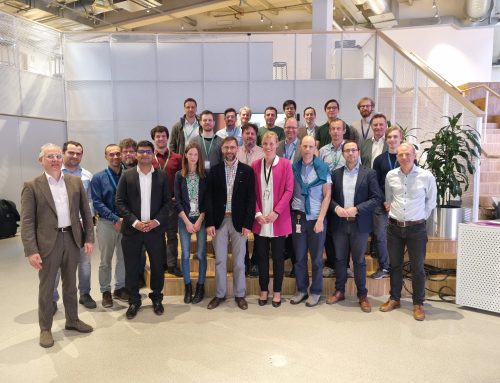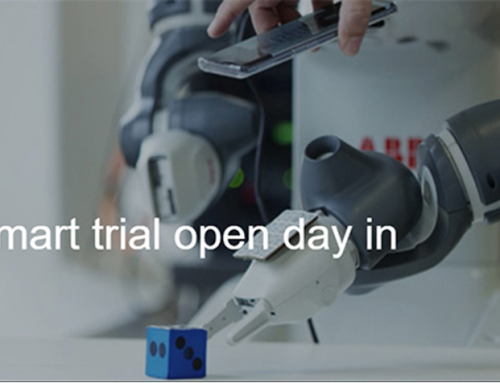The year 2019 not only marks the tenth anniversary of the Ericsson Innovation Day, it is also the year of the 5G launch in Germany. Since the new mobile radio standard plays a special role in the industrial sector due to novel technical features as ultra-low latency and high reliability, novel solutions for smart manufacturing do not miss the scene. As part of Ericsson Innovation Days the Fraunhofer IPT being a close industry partner demonstrated in the project 5G SMART, how the new mobile radio standard will enable real time monitoring of work pieces and machining processes, resulting in real-time detection of process disturbances and thus a reduction of manufacturing costs.
Ericsson Innovation Days and 5G-SMART
This year the inhouse-exhibition of the 5G technology expert Ericsson took place from 24 to 26 September and as always, many new innovative applications were presented, this time especially in connection with 5G. The exhibition focused on the five modern key topics titled as Limitless Connectivity, Intelligence Everywhere, 5G Consumer Value, Security, Trust and Reliability and Industrial 5G Ecosystems. The Fraunhofer IPT, as one of the Ericsson’s partners, participated with a demonstrator of the project 5G-SMART, a project that aims to create value in the manufacturing ecosystem: through enabling real-time monitoring of work pieces, machines and manufacturing process via Ultra Reliable Low Latency Communication (URLLC) services that will provide real-time detection of process failures resulting in reduction of manufacturing costs.
The use case AE-Sensor
The new 5G mobile radio standard features ultra-reliable low latency and this enables real-time process monitoring and control. To demonstrate exactly these qualities in an industrial application, an acoustic emission sensor jointly developed by Fraunhofer IPT together with the project partners Marposs and Ericsson was exposed in a drilling process. The sensor, which is directly placed on the work piece itself, allows a previously unknown process proximity and transmits the data via 5G. It is clearly seen that this use case targets time-critical process optimization inside a factory. Using a system of smart sensors, a flexible cloud environment and a 5G communication infrastructure, real-time monitoring and control of highly complex processes is now possible. Both wear of the tool head and process errors can be detected at an early stage of production and intercepted by immediate process control. This ensures the high quality of the product and enormous cost savings due to reduced rejects or necessary post-processing of workpieces.





